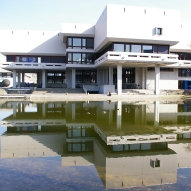Zusammenfassung
We propose a new way to identify the neural correlates of memory load in a delayed match-to-sample saccade task with a constant perceptual load. Two conditions were compared with low and high memory loads. In the low-load condition, a rectangular shaped probe defined by its color and orientation was presented centrally. After a delay period, four stimuli were presented peripherally, one in each ...
Zusammenfassung
We propose a new way to identify the neural correlates of memory load in a delayed match-to-sample saccade task with a constant perceptual load. Two conditions were compared with low and high memory loads. In the low-load condition, a rectangular shaped probe defined by its color and orientation was presented centrally. After a delay period, four stimuli were presented peripherally, one in each quadrant. The participants were instructed to saccade to the stimulus that matched the previously viewed sample on both color and orientation. In the high-load condition, the order of stimulus presentation was reversed: first four eccentric stimuli were presented and after a delay the central probe. In the high-load condition, the participant executed a saccade to the remembered location of the stimulus that matched the central probe in color and orientation. The behavioral results indicate that greater working memory load is associated with prolonged saccadic reaction times. A general linear model revealed regions in prefrontal cortex (left anterior insula, right superior and middle frontal gyrus, anterior medial cingulum), and bilaterally along the intraparietal sulcus extending into surrounding areas (precuneus, superior and inferior parietal lobe) that were more activated when participants had to conjointly remember the locations, colors and orientations of four objects (load-4) compared to when they only had to remember the features of a single object (load-1). Specific responses for greater working memory load are focused on regions responsible for feature binding (occipital-temporal cortex) and allocation of attention (anterior insular cortex). Multivariate pattern analysis during the retrieval period of a trial revealed voxel clusters in the ventral visual pathway and the frontal eye fields that correctly classify the target location during the retrieval period of both tasks.





 Altmetric
Altmetric